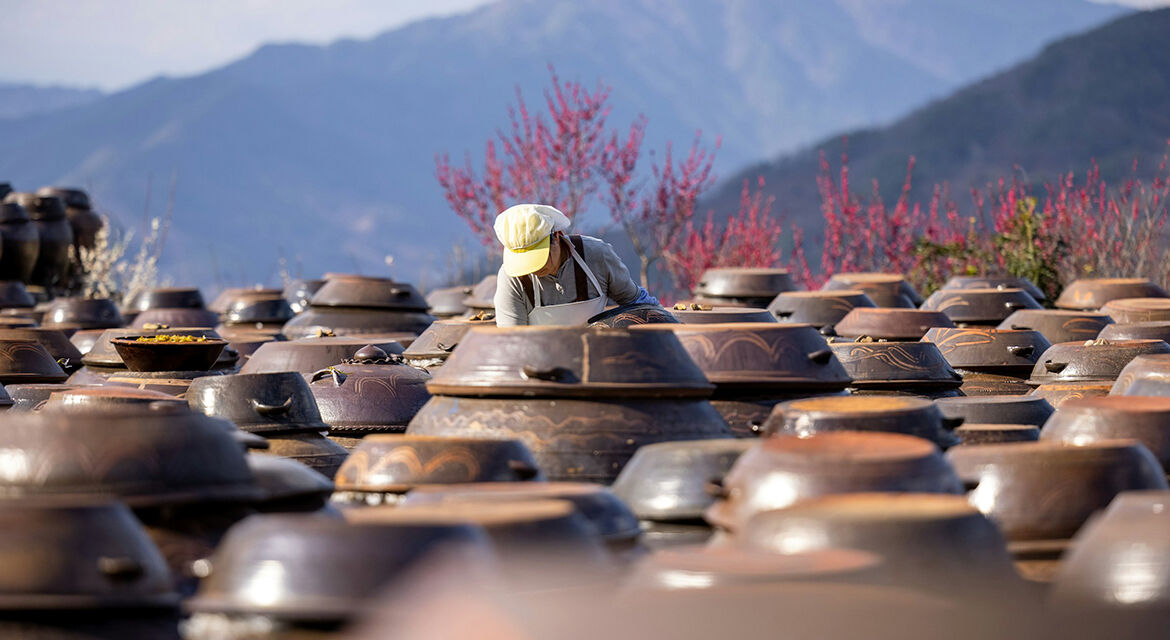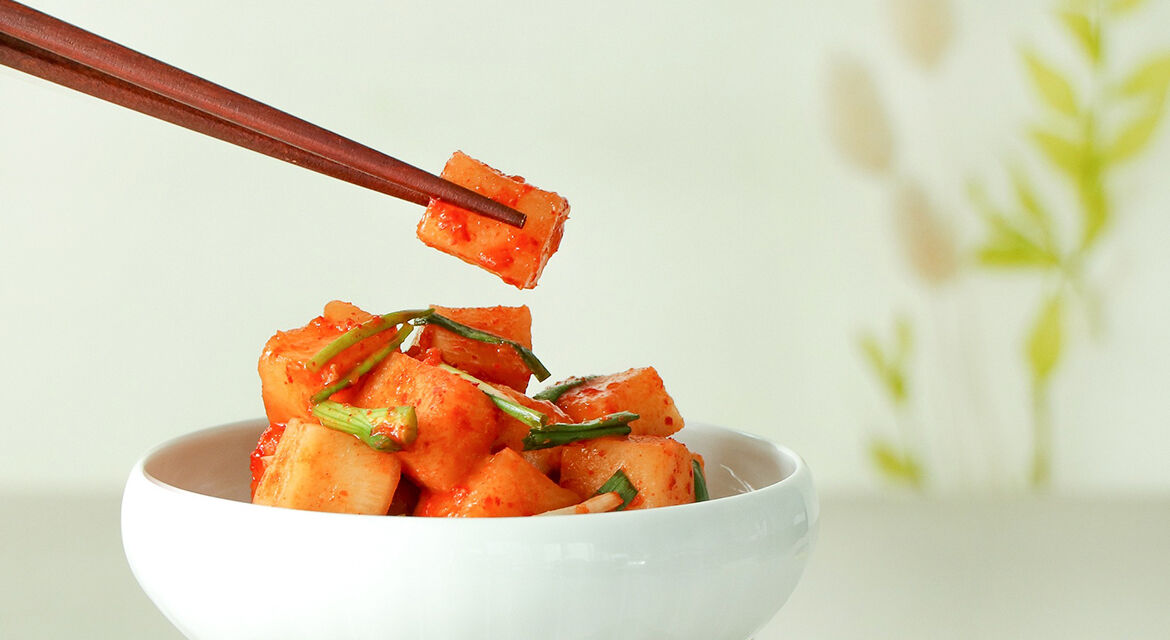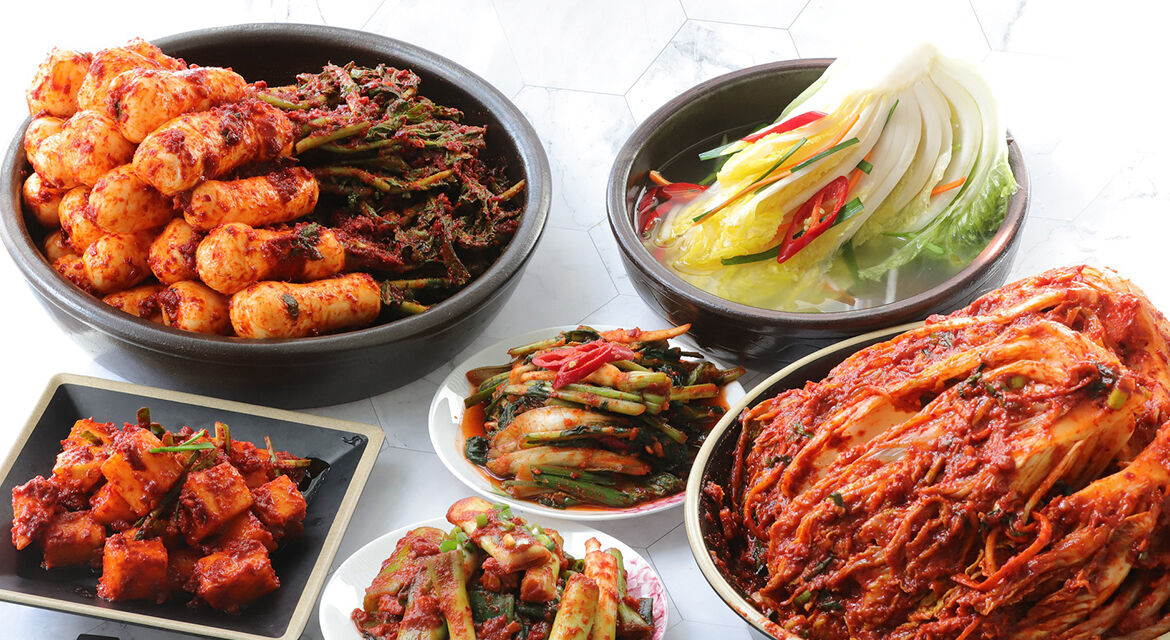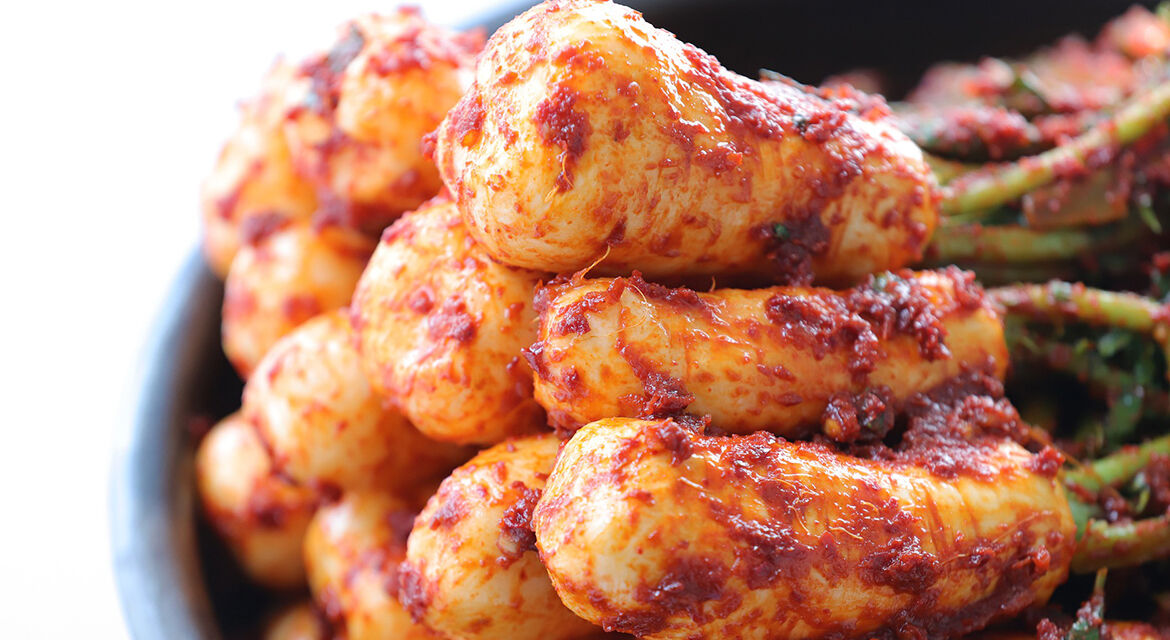Hyundai Worldwide Global Navigation
Editorials Kimchi: A Korean Culinary Triumph
Please use Safari to download the files.
The history and importance of kimchi to Korea – and, increasingly, the global food scene – is almost as wide ranging as the myriad varieties of the popular dish. But kimchi is more than just a fiery and tangy concoction of fermented and pickled vegetables. It’s a symbol of national pride, an integral part of daily life in Korea, and a simple yet sophisticated culinary masterpiece that has stood the test of time, firing enthusiasm for Korean cuisine around the world.
To understand kimchi’s origins, you must delve deep into Korea’s history. Archaeological evidence suggests that for thousands of years Koreans have been pickling, salting, and fermenting vegetables to preserve them, a necessity before the advent of refrigeration and a successful way of combatting food scarcity during Korea’s harsh winters.
Introduced around the 7th century, kimchi also provided the population with vital nutrients over these prolonged cold periods, with the unique taste a welcome benefit. This was enhanced with the addition of hot pepper powder in the 18th century, giving kimchi its iconic red color and spicy kick.
Fast forward a few hundred years to 2013 and UNESCO even recognized ‘kimjang’ (김장) – the age-old tradition of making kimchi in early winter – as an Intangible Cultural Heritage.
Kimjang has long been a ceremonial celebration that strengthens family bonds, promotes community cooperation, and ensures that no one goes without kimchi during the biting winter months. And while the onset of ready-made kimchi means the social element of kimchi making is facing more pressure than ever, it’s still a practice that’s performed by families, with this know-how passed on through generations.
Since the early days of kimjang, Koreans have used traditional earthenware pots, known as ‘onggi’ (옹기), in which the ingredients are packed tightly to ferment. The porous nature of the clay allows for natural airflow and the absorption of excess moisture, creating an optimal environment. The kimchi is left in a cool place, typically for several days to weeks depending on the desired level of fermentation, which dictates taste.
Traditional kimjang practices might be in decline, but the love for kimchi remains strong, with supermarkets and stores meeting the thriving demand for ready-made versions. There’s even a museum dedicated to kimchi in South Korea’s capital city, Seoul, while kimchi’s claims to fame even include a journey into space in 2008, accompanying South Korea’s first astronaut.
Many Koreans proudly declare they eat kimchi with every meal – including breakfast. It’s a staple embedded so deep in their culture that when Koreans travel abroad, many even take kimchi with them. That’s how important is to Korean life.
The devotion to kimchi goes beyond taste, too; it’s a testament to its nutritional benefits. Rich in probiotics and packed with vitamin C, B1 and B2, kimchi is a low-calorie, high-fiber delight that aids digestion and can even prevent disease and illness, depending on who you believe. In essence, kimchi really is food for the soul and food for the body.
With around 300 varieties, this iconic food caters to diverse tastes. From the common ‘baechu-kimchi’ (배추김치), made with Kimchi cabbage or Napa cabbage, to the refreshing ‘oi-so-bagi’ (오이소박이) cucumber kimchi, the special food’s versatility showcases the creativity and regional influences within Korean cuisine.
There are countless variations of kimchi influenced by region, season, occasion, and personal taste. To make kimchi, vegetables are typically fermented in brine, a solution of salt and water – the brine preserves the vegetables and kick-starts the fermentation process. Everyone has their own recipe, and many season with ingredients including garlic, ginger, chili pepper and sometimes fermented seafood to tailor the taste while it ferments.
Patience is key here, and put simply, kimchi is not just a side dish; it’s a star component of every Korean meal, eaten on its own, enhancing the flavors of ‘bap’ (밥, rice), or serving as a versatile component in a broad range of dishes.
As the pace of life accelerates and cultures across the world have moved from a scarcity of food to time, kimchi too has evolved.
Commercially produced kimchi fills the gap, offering convenience without compromising on flavor, while in the mid-1990s appliance brands launched specialty refrigerators. These gadgets are tailored for the optimal storage of Korea’s favorite fermented dish and offer specialized features to preserve the unique taste and texture.
Designed with multiple temperature zones, humidity control, and air filtration systems, these compact fridges prevent cross-contamination of odors and maintain crispness for maximum crunch. Some models even include a fermentation function, expediting the fermentation process for freshly prepared kimchi. Popular for their efficiency when it comes to both energy and time, they’ve become a staple in households, reflecting the cultural significance of kimchi at the heart of Korean cuisine.
Today, the kimchi industry is booming, and Koreans consume more than two million tonnes annually. It’ll come as no surprise that South Korea is the world’s largest exporter of kimchi; in 2023, the country shipped more than $155 million worth of what you might call Korea’s ‘greatest natural resource’ to over 100 countries around the world.
The food’s popularity is undisputed, but Korea’s Ministry of Agriculture, Food and Rural Affairs has even bigger plans and announced last year its aim to double exports to $300 million by 2027 with a comprehensive proposal to boost the domestic kimchi industry.
Kimchi could offer a further health boost, with the number of microorganisms used in the fermentation process proposed to rise from 27 to 60, while the development of technology to slow down fermentation should allow for longer delivery periods. There are even plans to designate ‘Kimchi Day’ in 15 countries.
Kimchi’s global ascent as part of ‘Hallyu’ (한류, the Korean Wave) and its integration into popular culture signifies more than just a culinary trend; it reflects a cultural exchange with food as a conduit for understanding.
As kimchi graces dining tables worldwide, spanning cultures and different cuisines, it not only represents Korea’s rich culinary heritage but also exemplifies how traditional dishes can become an integral part of the modern gastronomic experience. The success of kimchi on the international stage highlights the profound impact of the Korean Wave, demonstrating how a nation’s cuisine can resonate globally.
Editor. Sean Carson
sean.carson@hyundai.com
Global PR Strategy & Planning · Hyundai Motor Company
Disclaimer: Hyundai Motor Group believes the information contained herein to be accurate at the time of release. However, the company may upload new or updated information if required and assumes that it is not liable for the accuracy of any information interpreted and used by the reader.
About Hyundai Motor Group
Hyundai Motor Group is a global enterprise that has created a value chain based on mobility, steel and construction, as well as logistics, finance, IT and service. With about 250,000 employees worldwide, the Group’s mobility brands include Hyundai, Kia and Genesis. Armed with creative thinking, cooperative communication and the will to take on any challenges, we strive to create a better future for all.
More information about Hyundai Motor and its products can be found at:
http://www.hyundaimotorgroup.com or Newsroom: Media Hub by Hyundai , Kia Global Media Center (kianewscenter.com) , Genesis Global Newsroom







